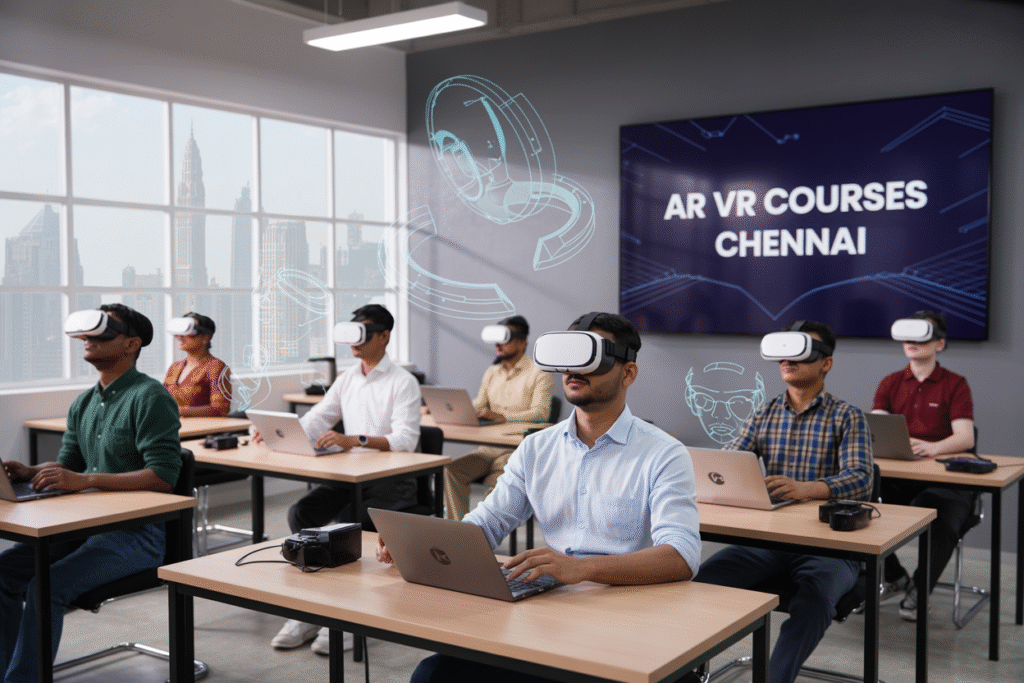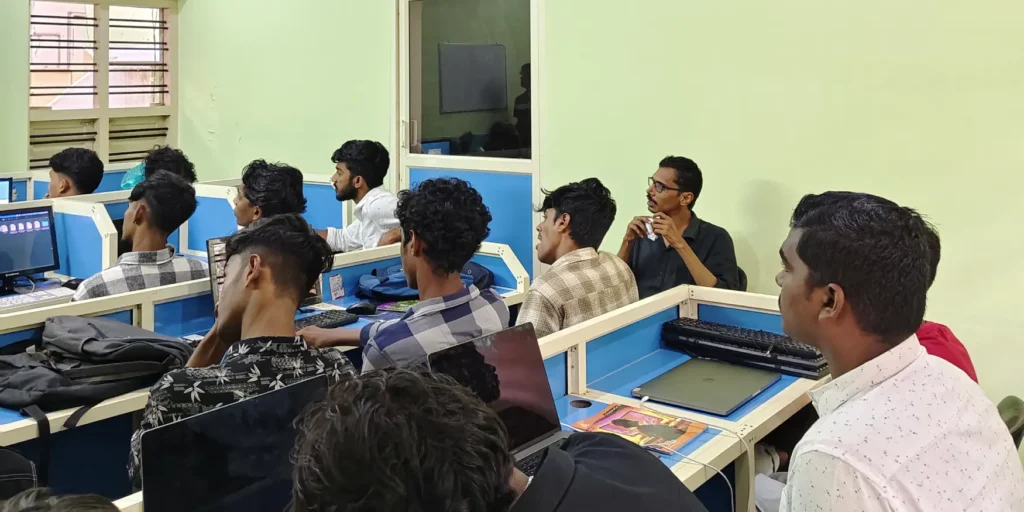The Ultimate Guide to AR VR Courses in Chennai
Looking for AR VR courses in Chennai to break into one of tech’s most exciting fields? You’re in the right place. This ultimate guide covers everything one need to know about from the academy teaches virtual reality courses in chennai to picking the right immersive technology courses to landing your dream job. This guide is perfect for fresh graduates who completed their degree ready to dive into emerging tech, working professionals wanting to upskill their careers, and tech enthusiasts curious about AR VR career opportunities. You’ll get the inside scoop on what it takes to succeed in this rapidly growing industry. We’ll walk you through the essential skills you need to master before starting your journey, plus give you a detailed breakdown why immersive skills academy is the best place to study AR VR courses in Chennai. By the end of this guide, you’ll know exactly which AR VR certification programs match your goals and how to take the next step toward your new career in Chennai’s thriving tech scene. Table of Contents Evolution of AR VR Technologies – Slides Evolution of XR Key differences between Augmented Reality and Virtual Reality You might think AR and VR are the same thing, but they’re actually quite different technologies. Virtual Reality completely immerses you in a digital world where everything you see is computer-generated. When you put on a VR headset, you’re transported to entirely new environments – “Whether that’s virtually walking through ancient Hampi or undergoing safety training inside a ship’s hull” Your real-world surroundings disappear completely. Augmented Reality, on the other hand, adds digital elements to your real world. Think of Cardskool as an Augmented Reality mobile app for pre-school children that allows them to bring animals into their real world and take selfies with their favorite creatures or Instagram filters that put digital sunglasses on your face. AR enhances what’s already there rather than replacing it entirely. Feature Virtual Reality (VR) Augmented Reality (AR) Environment Fully digital Real world + digital overlay Hardware VR headsets, controllers Smartphones, AR glasses, tablets User experience Complete immersion Enhanced reality Applications Gaming, training simulations , etc Marketing, navigation, education, Remote Troubleshooting, etc Both technologies require different skill sets and development approaches, which is why many AR VR courses in Chennai cover both specializations to give you maximum career flexibility. “If you want to clearly understand the differences between AR, VR, and MR, schedule a demo class.” Growing job market demand in Chennai’s tech sector Chennai, being one of the major manufacturing hubs for industries like automotive and component manufacturing, makes it easy for employers to find the necessary expertise and employ them in their ongoing XR initiatives. The demand for skilled professionals is on the rise in job portals, and you’ll find opportunities across multiple industries that have embraced these technologies. The automotive sector in Chennai, including major manufacturers like Ford and Hyundai, Royal Enfield actively recruits AR VR specialists for design visualisation and virtual prototyping. Educational institutions are also jumping on board, requiring experts who can develop interactive learning modules and virtual classrooms. Tech giants like TCS, Infosys, Wipro and Tech Mahindra have established dedicated AR VR divisions in Chennai, creating hundreds of job openings. Startups focused on AR VR solutions are also sprouting up across the city, offering you chances to work on cutting-edge projects from day one. Your timing couldn’t be better – the Chennai tech sector is experiencing a shortage of qualified AR VR professionals, which means companies are willing to offer competitive packages and faster career growth to attract talent. High-paying career paths in AR VR development Your earning potential in AR VR development can be substantial, especially as you gain experience and specialise in specific areas. Entry-level AR VR developers in Chennai typically start with salaries ranging from ₹1.8-3.5 lakhs annually, but your compensation grows rapidly with experience. Senior AR VR Developer positions can command ₹8-15 lakhs per year, Specialised roles offer even higher compensation AR VR Consultants working with multiple clients works on hourly rates . The beauty of this field is that you can also work as a freelancer, charging premium rates for specialised projects. Your location advantage in Chennai is significant – the cost of living is lower than Bangalore or Mumbai, giving you higher purchasing power even with comparable salaries. The city’s robust transportation infrastructure, including metro and local train services connecting areas like Tambaram to Chennai Central, makes it easy for outstation students to find affordable accommodation and hostel facilities in the suburbs while maintaining convenient access to XR training academies located in the city center. Many professionals who complete AR VR certification programs find their income doubling within 2-3 years of entering the field. Your investment in professional AR VR courses today The demand for AR VR professionals is showing solid growth momentum, with global shipments for AR/VR headsets growing 10% in 2024 according to new data from the International Data Corporation (IDC) IDC – AR & VR Headsets Market Insights. Your investment in professional AR VR courses today positions you perfectly for this growth wave. Companies are already struggling to find qualified professionals, and this talent gap will only widen as more industries adopt AR VR technologies. Chennai’s position as a Manufacturing hub makes it well-positioned for AR VR industry growth, with many companies willing to train the right candidates who have foundational skills from quality training institutes. Essential Skills Required for AR VR Success Programming Languages Needed for AR VR Development Your journey in AR/VR development begins with mastering the right programming languages. Each language serves a unique role in building interactive and high-performance immersive applications. C# – The Unity Powerhouse Primary language for Unity, the leading AR/VR engine Enables: Interactive experiences : XR, Games, etc Game object management Complex user interactions C++ – Performance & Unreal Engine Core language for Unreal Engine development Ideal for performance-critical applications like AEC interactives JavaScript & TypeScript – Web AR Solutions Go-to languages for Web AR


